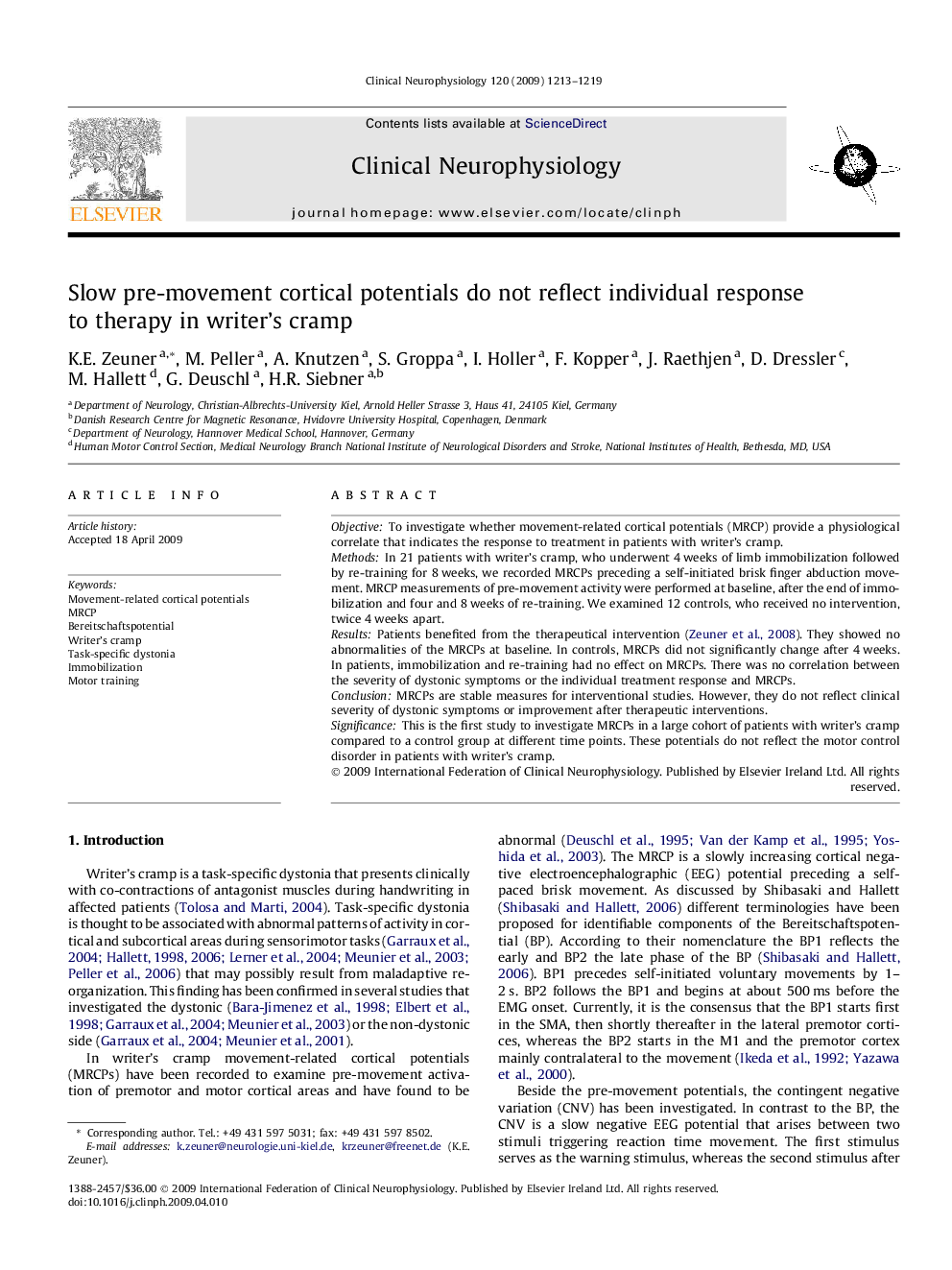| Article ID | Journal | Published Year | Pages | File Type |
|---|---|---|---|---|
| 3046545 | Clinical Neurophysiology | 2009 | 7 Pages |
ObjectiveTo investigate whether movement-related cortical potentials (MRCP) provide a physiological correlate that indicates the response to treatment in patients with writer’s cramp.MethodsIn 21 patients with writer’s cramp, who underwent 4 weeks of limb immobilization followed by re-training for 8 weeks, we recorded MRCPs preceding a self-initiated brisk finger abduction movement. MRCP measurements of pre-movement activity were performed at baseline, after the end of immobilization and four and 8 weeks of re-training. We examined 12 controls, who received no intervention, twice 4 weeks apart.ResultsPatients benefited from the therapeutical intervention (Zeuner et al., 2008). They showed no abnormalities of the MRCPs at baseline. In controls, MRCPs did not significantly change after 4 weeks. In patients, immobilization and re-training had no effect on MRCPs. There was no correlation between the severity of dystonic symptoms or the individual treatment response and MRCPs.ConclusionMRCPs are stable measures for interventional studies. However, they do not reflect clinical severity of dystonic symptoms or improvement after therapeutic interventions.SignificanceThis is the first study to investigate MRCPs in a large cohort of patients with writer’s cramp compared to a control group at different time points. These potentials do not reflect the motor control disorder in patients with writer’s cramp.
